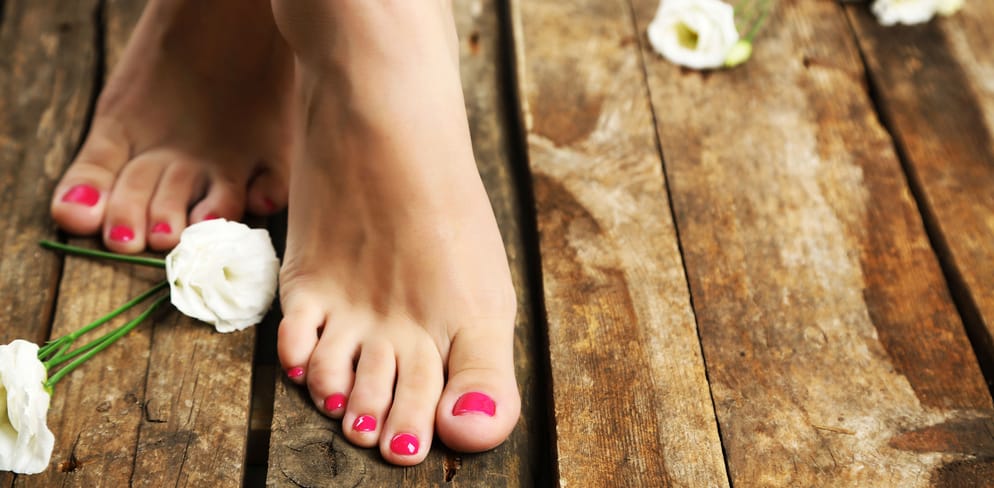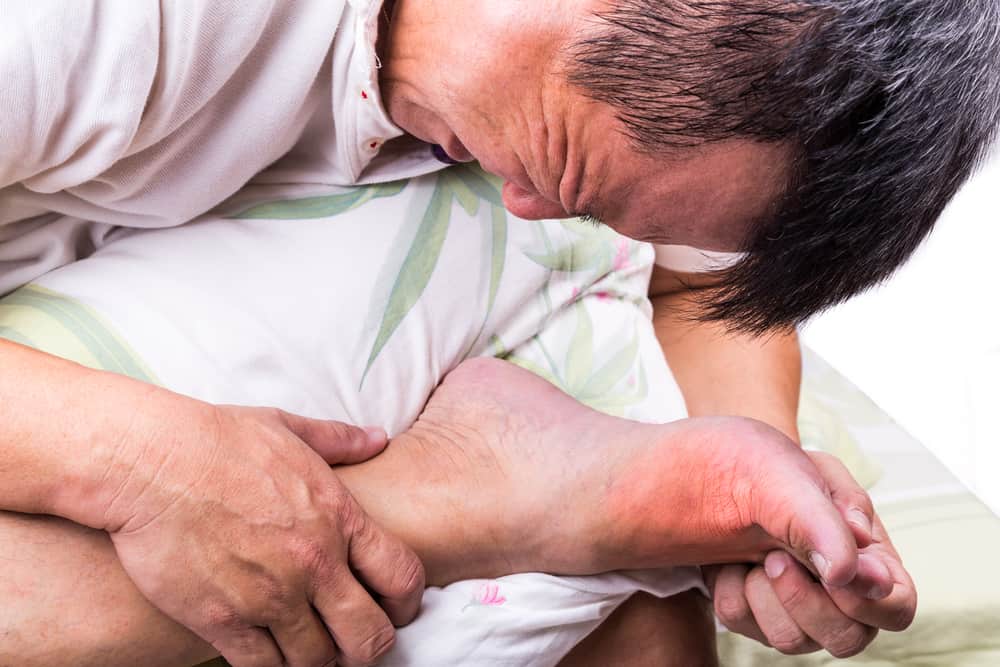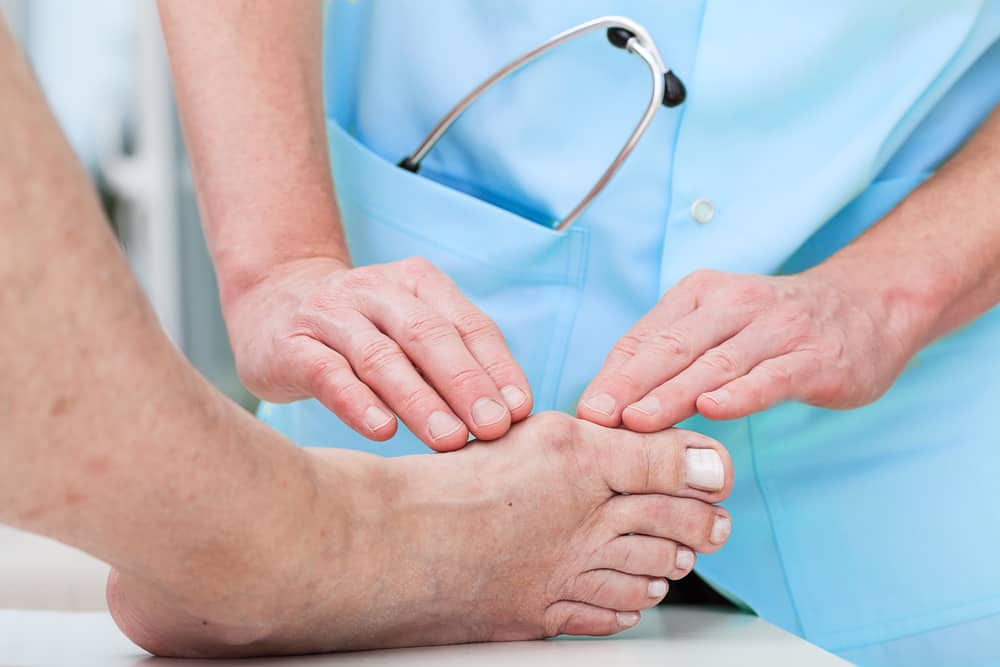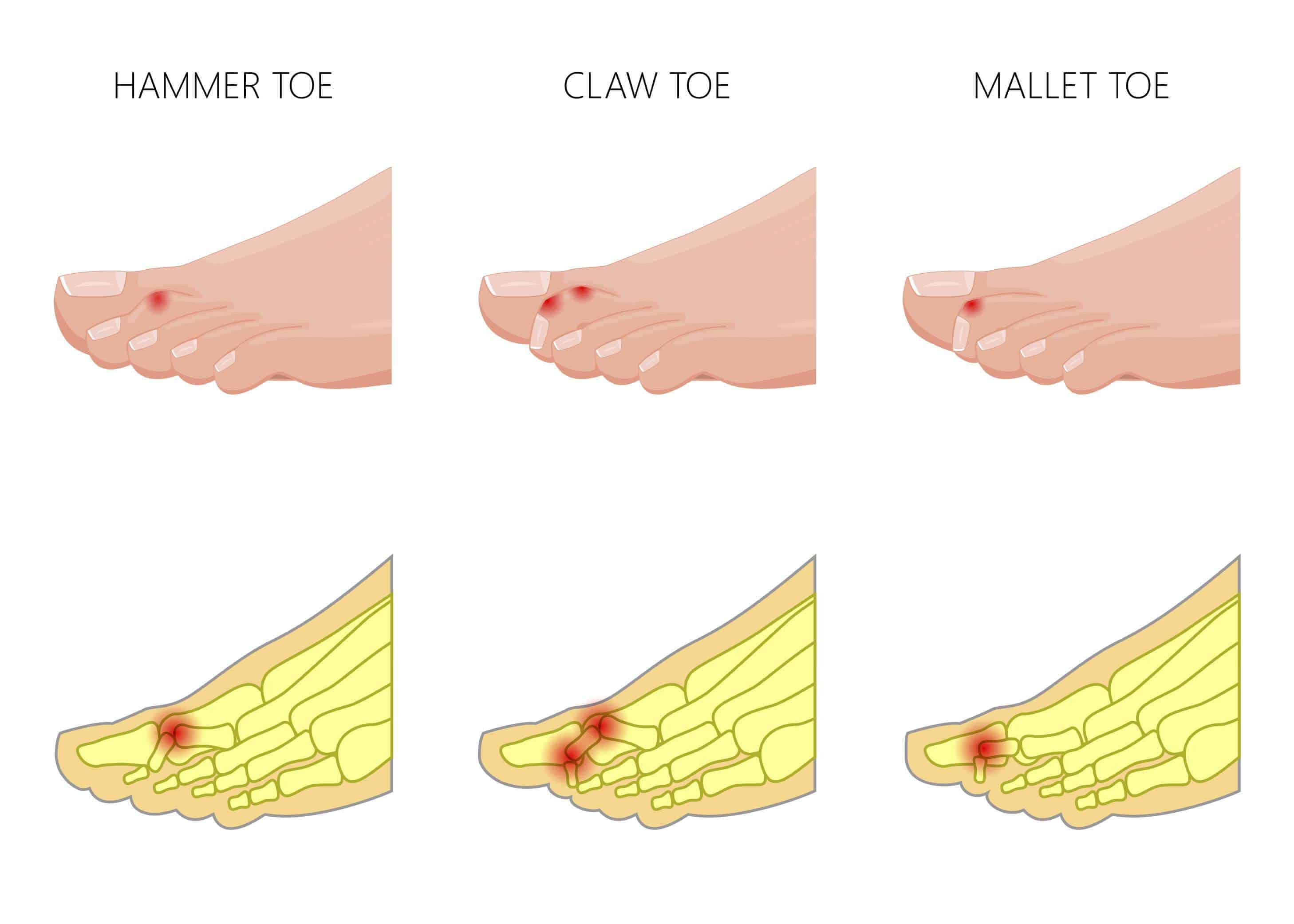Toe Problems

For more information on the toe problem treatments that are available, please use the toggle switches below:

Gout is a condition caused by abnormally high levels of uric acid in the blood.
The large toe joint in the foot is commonly affected. The crystals accumulate around the joint causing acute inflammation and intense pain. The initial attack is usually the worst as the onset is sudden and often comes on at night.
Repeated attacks of gout can cause arthritis in the affected joints if left untreated.
Symptoms:-
Sudden attack of severe pain in one or more joints.
Joint feeling hot and tender, unable to bear anything coming into contact with it.
Swelling.
Red shiny skin over affected joint.
Peeling, itching and flaking skin as swelling subsides.
Treatments:-
Take medication prescribed by your G.P. as soon as you notice an attack.
Rest and elevate the limb.
Keep the joint cool by applying ice packs for no more than 20 minutes keeping the ice pack wrapped in a towel, otherwise this can damage the skin.
Keep well hydrated, this will help flush out the crystals.
Low Level Laser Therapy has proven to be successful in treating gout in the early stages.

A bunion is a bony deformity at the base and side of the big toe joint. The big toe moves towards the other toes and may also rotate and twist.
Wearing shoes that are too tight may accelerate the development and cause irritation and inflammation around the joint. They are usually hereditary and linked to genetics. Foot injuries and flat feet that pronate also may contribute.
Bunions can also lead to secondary problems, such as hammertoe, corns, calluses, ulcers, bursitis and arthritis.
Many people with bunions suffer from discomfort and pain from the constant irritation, rubbing, and friction of the joint against shoes. The bigger the bunion gets, the more it hurts to walk.
Because they are bony deformities, bunions do not resolve by themselves.
Our objective is minimum invasive treatment initially as this is less hazardous and the patient is less likely to suffer side effects and complications of more invasive methods.
A Podiatrist will remove the corns and calluses gently with a scalpel and can advise on the best form of treatments available which may also include protective padding, orthotics, or splints for night time wear ( this is often recommended for adolescents with bunions, because their bone development may still be adaptable ).
Low Level Laser Therapy is also effective in reducing pain.
In severe cases where these conservative methods have failed referral to a specialist surgeon may become necessary.
Painful toes can have many causes and it may be difficult for the layman to self diagnose, so it is better to seek specialist advice from a skilled Podiatrist.
Diagnosis is normally from clinical examination and the Podiatrist will discuss the best course of action to relieve the symptoms. Some of the most common causes of painful toes can include :-
- Corns and Callus
- Hammer toes
- Arthritis
- Bursitis
- Ingrown Toenails
- Inappropriate Footwear

These terms are used to describe deformities that sometimes develop in the lesser or smaller toes. They are common in people with bunions or people who have very flat feet or feet with very high arches.
A hammer toe is when the inter mediate joint of the little toes are bent right over and eventually the joint becomes completely rigid.
A mallet toe affects the distal joint at the end of the toes, if both joints are curled over they are called ‘claw toes’.
All these deformities can cause corns and calluses where the prominent joints rub against the shoes or the ground. In severe cases extreme pressure can cause the affected areas to ulcerate.
Initially we treat this condition conservatively as this is less invasive and the patient is less likely to suffer side effects and complications than more invasive methods.
A Podiatrist will remove the corns and calluses gently with a scalpel and discuss with you treatments that you may benefit from in the future.
The condition is hereditary however injuries during activity or systemic problems such as rheumatoid arthritis or gout may increase the likelihood of this joint becoming rigid.
Diagnosis is usually from clinical examination.
Our empathises is on minimal – invasive treatment where possible and the use of latest technology to achieve maximum mobility, pain relief, reduce swelling and improve gait. LLLT has been shown to be highly effective in treating this condition.
Osteoarthritis is a degeneration of the joint or joints usually involving swelling of the affected joint, commonly called the “wear-and-tear” arthritis. There is often associated pain and weakness.
It can appear in any joint in the foot and is caused when the cartilage between bones has become worn and is no longer cushioning the joint as well as it used to.
Diagnosis is normally from clinical examination the Podiatrist will discuss the best course of action to relieve the symptoms. LLLT is effective in reducing the pain and inflammation. A biomechanical assessment may be necessary which is then used to fabricate custom made orthotics to relieve the pain by redistributing the pressure away from the joints. None weight bearing exercise such as swimming or yoga has also been found to be helpful in relieving symptoms.
For those who have not had any success with less invasive methods surgery may be recommended.
Rheumatoid Arthritis is a systemic auto immune disease affecting multiple joints throughout the body. Usually symptoms appear in several joints on both feet first and include pain, swelling, stiffness and muscle weakness. Bony changes can often lead to misalignment or partial dislocation of the joints.You may develop corns, bunions, claw toe or hammer toe.
The earlier it’s diagnosed, the more effective your treatment. Don’t ignore joint pain, as Rheumatoid Arthritis often shows up in the feet first.
Diagnosis is normally from clinical examination and medical history the Podiatrist will discuss the best course of action to relieve the symptoms which may include referral for blood tests or X-rays. Primarily we treat this condition conservatively as this means the patient is less likely to suffer side effects of more invasive treatments. A biomechanical assessment may be necessary which is then used to fabricate custom made orthotics to relieve the pain by redistributing the pressure away from the joints. LLLT is also effective in reducing the pain and inflammation and reducing the need for painkilling drugs.
For those who have not had any success with less invasive methods surgery may be recommended the most successful option being fusion in which the bones are fused resulting in a loss of movement in that particular joint which can reduce pain.
Foot fractures can range from a slight crack in the bone to a complete break that goes through the skin. Pain is worse when standing or walking.
Treatment depends on the location and type of injury. Diagnosis is usually from clinical examination and x-rays The Podiatrist is able to assess the factors involved in order to prescribe the necessary corrections to assist recovery.